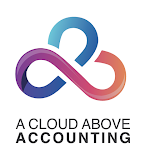From managing your team to marketing your products or services, it’s easy to overlook the importance of solid financial management. By understanding the fundamentals of bottom line bookkeeping, you can make informed decisions, improve profitability, and ensure your business’s long-term sustainability.

Understanding the Basics
Bottom line bookkeeping focuses on tracking and understanding your business’s actual profitability. Unlike basic bookkeeping that simply records transactions, this approach helps you see how every financial decision affects your profits. Our cloud bookkeeping services can help you implement these profit-focused practices.
Think of bottom line bookkeeping as your financial GPS. Just as a GPS shows you the quickest route to your destination, good bookkeeping practices show you the fastest path to better profits. This means tracking:
- Income from all sources
- Direct and indirect costs
- Operating expenses
- Hidden profit drains
- Growth opportunities
Core Elements of Bottom Line Focus
Let’s look at the key areas you need to monitor to maintain a healthy bottom line. These elements work together to show you exactly where your money comes from and where it goes.
Revenue Tracking
Proper revenue tracking goes beyond simply recording sales. You need to understand:
- Where Your Money Comes From:
- Product lines
- Service categories
- Customer segments
- Seasonal patterns
Expense Management
Understanding where every dollar goes helps you make smarter spending decisions. With proper bookkeeping, you’ll spot unnecessary expenses and find opportunities to reduce costs without sacrificing quality.
Key expense areas to monitor include:
- Fixed costs (rent, salaries, insurance)
- Variable expenses (supplies, utilities)
- One-time purchases
- Recurring subscriptions
- Hidden fees
Implementing Bottom Line Practices
Setting up effective bottom line bookkeeping doesn’t have to be complicated. Start with these foundational steps:
- Choose the right tools for your business
- Set up clear expense categories
- Create regular review schedules
- Track profit margins by product or service
- Monitor cash flow consistently
Using cloud accounting services makes implementation easier by automating many tasks and providing real-time insights into your finances.
Internal Controls for Better Bottom Line Management
Strong internal controls protect your bottom line and help prevent errors or fraud. Good controls don’t need to be complicated, but they should be consistent and well-documented.
Basic Control Measures
Set up these essential controls in your business:
- Separation of Duties:
- Different people handle payments and reconciliation
- Someone other than the bookkeeper reviews reports
- Multiple approvals for large purchases
- Independent review of payroll
- Separate handling of cash and records
- Documentation Requirements:
- Written procedures for financial tasks
- Standard forms for expenses
- Required supporting documents
- Clear approval processes
- Regular review schedules
Measuring Business Performance
Bottom line bookkeeping gives you clear metrics to measure success. Instead of guessing about your business performance, you’ll have concrete numbers to guide your decisions.
Key Performance Indicators
Track these essential metrics:
- Gross profit margin
- Net profit margin
- Operating expenses ratio
- Cash flow position
- Return on investment
Our ‘Streamline Your Cashflow With Accounts Receivable Management Service’ guide can help you maintain healthy cash flow while monitoring these important metrics.
Strategic Decision Making
When you understand your true profitability, you can make smarter business decisions. Here’s an example of how this works:
Say you’re thinking about adding a new product to your lineup. Instead of guessing whether it’s worth the investment, your bottom line bookkeeping helps you answer critical questions:
- What will the total cost be, including inventory, storage, and handling?
- What price point will give you the right profit margin?
- How many units do you need to sell to break even?
- How long will it take to recover your initial investment?
- What impact will this have on your cash flow?
By using your financial data, you can evaluate opportunities with confidence rather than relying on gut feelings. This same approach works for other business decisions, from hiring new staff to investing in equipment or expanding your services.

Employee Training and Involvement
Your team plays a crucial role in bottom line bookkeeping success. When employees understand how their actions affect the bottom line, they make better decisions.
Training Programs
Effective training should cover:
- Basic financial concepts
- Company-specific procedures
- Software usage
- Security protocols
- Error reporting
Staff Responsibilities
Clear roles help maintain good financial practices:
- Who can approve expenses
- How to submit receipts
- When to report issues
- Where to direct questions
- What requires management review
Communication Protocols
Establish clear channels for:
- Reporting discrepancies
- Requesting approvals
- Sharing financial updates
- Suggesting improvements
- Addressing concerns
Our small business bookkeeping team can help train your staff on proper procedures and best practices.
Performance Metrics
Help employees understand their impact on the bottom line by tracking:
- Department expenses
- Revenue generation
- Cost savings
- Process efficiency
- Error rates
Remember to recognize and reward employees who contribute to bottom line improvements. This encourages continued attention to financial responsibility throughout your organization.
Bottom Line Recovery Strategies
If your bottom line isn’t where you want it to be, these strategies can help improve it. Our bookkeeping catch up services can help you identify and implement the right approaches for your business.
Identifying Profit Leaks
Common areas where profits slip away:
- Unused subscriptions
- Excess inventory
- Inefficient processes
- Underpriced services
- Hidden bank fees
Cost Reduction Strategies
Smart ways to cut costs without hurting quality:
- Review all subscriptions and memberships
- Negotiate with suppliers
- Optimize inventory levels
- Improve energy efficiency
- Automate repetitive tasks
Revenue Enhancement
Beyond cutting costs, look for ways to increase revenue:
- Review pricing strategies
- Identify cross-selling opportunities
- Add complementary services
- Improve collection processes
- Target most profitable customers
Common Challenges and Solutions
Every business faces challenges with bookkeeping, but solutions exist. Here’s how to handle common issues:
Data Accuracy
- Problem: Missing transactions or incorrect entries can distort your bottom line understanding.
- Solution: Use our ‘Bookkeeping Cleanup Services For Small Businesses’ guide to establish reliable tracking systems and regular review processes.
Time Management
- Problem: Daily bookkeeping tasks often get pushed aside during busy periods.
- Solution: Set up automated systems through QuickBooks or Xero to handle routine tasks, leaving you time for analysis.
Understanding Reports
- Problem: Financial reports can seem overwhelming.
- Solution: Start with basic profit and loss statements, then gradually add more detailed analysis as you become comfortable with the numbers.
Tips for Success
These practical tips will help you maintain effective bottom line bookkeeping:
- Review your numbers weekly
- Keep business and personal expenses separate
- Track cash transactions immediately
- Monitor profit margins by product or service
- Schedule regular financial reviews
Remember that bottom line bookkeeping isn’t just about tracking numbers – it’s about using financial information to make better business decisions.
Future Planning
Use you bookkeeping data to plan for growth:
Short-Term Planning:
- Set monthly profit goals
- Plan for seasonal changes
- Budget for upcoming expenses
- Track progress regularly
Long-Term Strategy:
- Identify growth opportunities
- Plan major investments
- Set realistic targets
- Build emergency funds
Ready to improve your bottom line bookkeeping? Contact us today for a free consultation. Our team at A Cloud Above Accounting will help you set up systems that work for your business and support your growth goals.
FAQs
What common mistakes should I avoid?
Mixing personal and business expenses, ignoring small transactions, and waiting too long to record data.
How does bottom line bookkeeping help with taxes?
It provides organized records and helps identify tax deductions throughout the year.
Can I handle bookkeeping myself?
Yes, but many businesses benefit from professional help, especially when setting up systems.
What is bottom line bookkeeping?
Bottom line bookkeeping focuses on profitability and business performance, not just recording transactions



